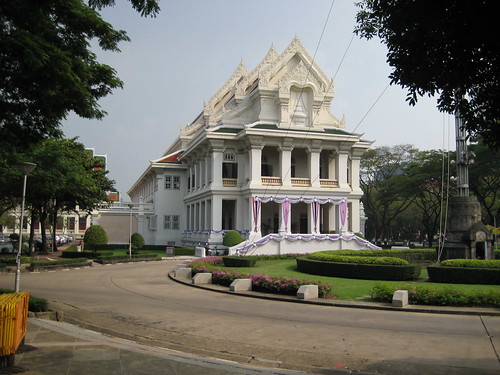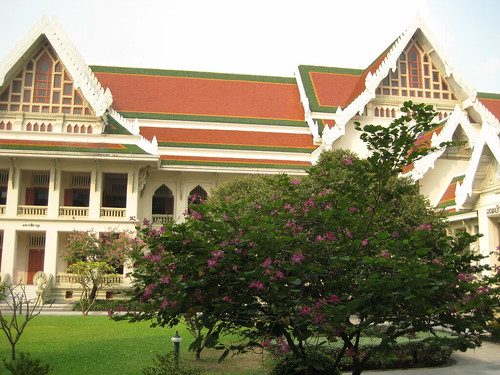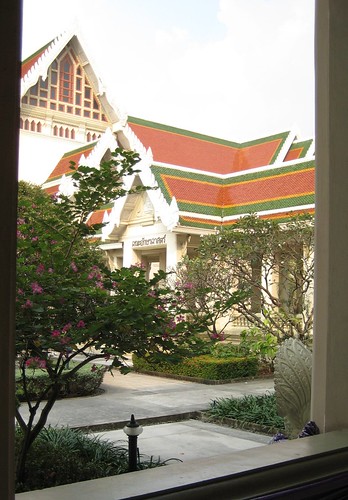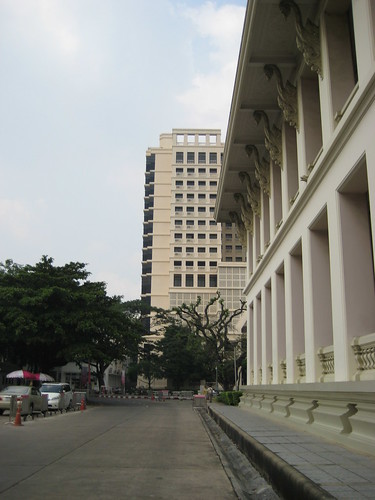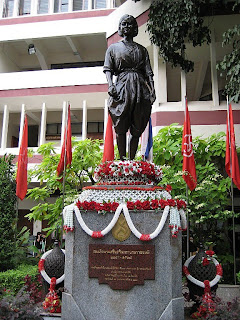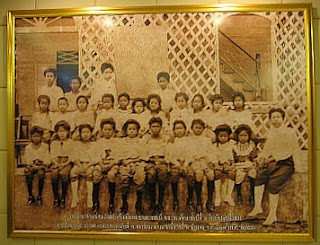Note
The following is a copy of an article I
originally posted on Blogger.com, July 21,
2011:
https://paultrafford.blogspot.co.uk/2011/07/childrens-dhamma-kruba-srivichai.html
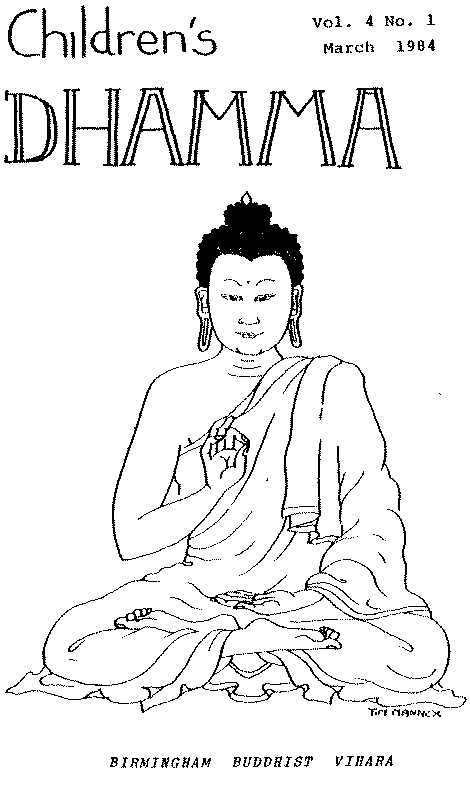
I went to school in Birmingham between 1980 and 1987. Around that time, the Birmingham Buddhist Vihara published Children’s Dhamma for younger members. Reflecting the multiple traditions, there were contributions from Zen and Tibetan practitioners as well as from Theravadins.
I would like to highlight an article from March 1984 written by my mother about Kruba Srivichai, a Thai monk, whose exemplary life she probably got to learn about whilst growing up in Thonburi. He may not be so well known now, so I reproduce what she wrote about him here. But this is just the first article – there was more to follow. I must have another delve into the family papers to see if I can find the sequel…
Kruba Srivichai
by Fuengsin Trafford
Kruba Srivichai was one of the most famous monks of Northern Thailand. He was an inspiration to many and was revered by thousands of monks, nuns and laymen, from cities, towns, villages and the hill-tribes. Under his guidance they came together and volunteered to rebuild, repair and restore many beautiful pagodas and temples and the roads leading to them.
They worked very hard and brought their own food. Some people gave money, food and transport. As a result of their good work magnificent ancient buildings and pagodas which had been destroyed in the war were restored to their former glory.
Kruba Srivichai’s work can be found throughout the north in an area which at one time was known as “the Kingdom of Laannaa Thai”.
This remarkable monk led a very holy life, and worked very hard for the Buddha-Dhamma, and he was a good example to many. In the eyes of his followers he had a kind of supernatural quality but this he always denied, saying he was just an ordinary monk. After his death his fame spread further and he was called the “Saint of Laannaa Thai”.
Kruba Srivichai was born on the 11th. June 1878, (the Year of the Tiger), in a small village outside the Province of Lumpoon, called Baan Paang. He was the fourth child and had four brothers and sisters. His parents were poor and lived on a small farm which was surrounded by very high hills and thick forests. It was said that on the night just before he was born the bright moon was suddenly darkened by a cloud and there was thunder and lightening. There was also an earthquake which shook the family’s cottage. In those days this was thought to be a very good omen for a saintly person’s birth. The baby was given the name “Faa Hong” which means thunder.
At the age of seven Faa Hong was very good and quiet and did not enjoy playing with children of his own age. He was very kind, never harmed animals and looked after the family’s buffaloes very well. Once he freed the fish which hie father had caught and kept in a jar of water. He showed deep compassion for every creature. He refused to eat meat and was content to have rice and a variety of chilli sauces for his meals. The young boy’s favourite chore was to take the buffaloes to graze in a quiet and lonely field, he would then sit under a tree and contemplate. He loved to visit Wat Baan Paang, a local temple which was situated on the edge of a hill; the Abbot was called Kru Baa Kaat. According to his name he was a respected monk who had been studying and practising the Dhamma.
Faa Hong was set on going to school at Wat Baan Paang, the local education centre in those days. He was also inspired by the monk’s behaviour and way of life. Having watched his brother’s ordination he was even more impressed, and later asked his parents permission to be ordained. When he was asked why he wanted to become a monk, he said it was not because he wanted to run away from the hard life of a farmer, but that he wanted to study the Dhamma and gain merit for a better rebirth for his parents. His parents were very happy to hear this and granted his wish. So Faa Hong was ordained a Samanera (novice) when he was just eighteen years old.
The new Samanera worked very hard and studied the local alphabets which were written on palm leaves. He also studied Pali and Sanskrit so that he could read the scriptures.
Over a year later Samanera Faa Hong had mastered all the local languages and went on to study the Dhamma and Vipassana Meditation. Almost every day he went up to the top of the hill to sit in solitude surrounded by all kinds of plants and trees.
Two years passed and Samanera Faa Hong was twenty one years old. He was ordained a Bhikkhu and given the Pali name “Siri Vichyo”. People prefered to call him “Phra (monk) Sri Vichai”.
His teacher noticed the young monk’s dedication and unblamable conduct and sent him to a superior teacher called “Kru Baa Upala” at Doi Tae to study meditation. It was the first time he had left home having a difficult journey on foot and by cart. It took several days to reach the temple although it was in the same province.
His new teacher was soon impressed with the young monk’s excellent memory and undivided attention. One year later Phra Sri Vichai finished his studies and went back to Wat Baan Paang. By then his reputation for being a most worthy monk had spread. He ate only one meal a day and was a vegetarian.Three years later the Abbot passed away and Phra Sri Vichai was appointed Abbot.
Baan Paang village was surrounded by many Hill Tribes, and they lived in the high hills and forests nearby. These people were very poor and badly needed medical care. Phra Sri Vichai had great compassion for them and wanted to teach them the Dhamma, and make them see how foolish it was to worship spirits, and took inspiration from the Buddha who used to travel to many places to teach all kinds of people. So Phra Sri Vichai went into the forests and hills to teach, spending a few days in each village. He also healed many people with herbal medicines. These people soon realised that his medicine was more help than the spirits. He spent a month amongst the tribes and soon mastered all their languages. More and more of the Hill Tribe people e.g. Maeu, Yau, Karen, Leesaw, etc. became Buddhists and the great monk’s fame spread. Many people sent their sons to be ordained by him, and to stay at Wat Baan Paang and study the Dhamma. —
— to be continued.
A couple of others articles, with photos:
- Phra Kruba Srivichai – article by Chiengmai Chimes relating his shrine.
- Kruba Srivichai, Patron Saint of Chiang Mai compiled by Josh Scoggins
For further interesting articles for youngsters, please read Children’s Dhamma Volume 4, No. 1. (scanned copy in PDF format).



